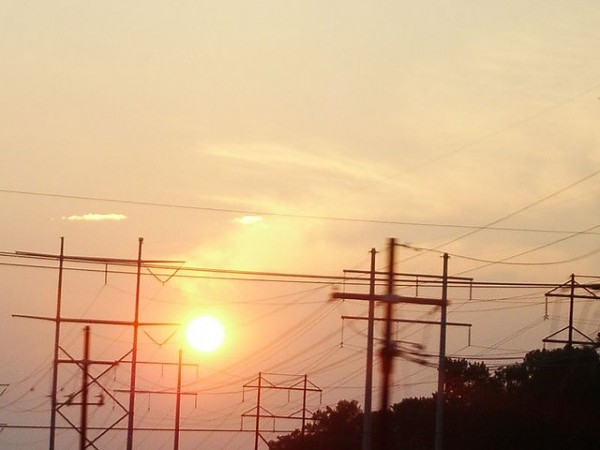
The sun has been shining brightly on solar power, but can it last? California has seen a lot of booms and busts, and solar power has been among them. Solar power boomed in the late 1970s and busted in the decades that followed. Today, it’s looking bright again, and solar panels blanket the state. But how far can we take it, and how much can the sun really do for us? In advance of the Zócalo event “Is California’s Solar Gold Rush Destined to Fail?“, we asked several solar supporters and skeptics for their take on whether the sun has a shot at becoming California’s primary source of energy.
Hold On To Your Hats: Solar’s Just One Good Source
 Solar’s potential is obvious: a report by the California Energy Commission found that solar photovoltaic panels could ultimately generate 17 million megawatts of power in the state. Even with the relatively low efficiency rates of solar power, that adds up to roughly 40 times more power than the state is projected to require in 2020.
Solar’s potential is obvious: a report by the California Energy Commission found that solar photovoltaic panels could ultimately generate 17 million megawatts of power in the state. Even with the relatively low efficiency rates of solar power, that adds up to roughly 40 times more power than the state is projected to require in 2020.
But solar power is also one of the most expensive ways to generate electricity. and without innovations load balancing and energy storage, solar will prove difficult to scale at the pace required to avert the risks of climate change. Even with all the new solar energy infrastructure erected in recent years, California’s two nuclear power plants still provide more than 25 times as much power as all the state’s solar energy sources combined. So California cannot rely on solar alone.
Instead, California should pursue all options for low-carbon power generation, including solar and other renewables like wind, advanced biofuels, zero-emissions nuclear power, and carbon-capture technologies. Above all, California’s priorities should be to drive innovations and cost declines in the broad portfolio of clean energy technologies, so that clean tech can compete with fossil fuels without relying on federal or state subsidies.
The potential of solar energy is high, and a landmark study from the California Council on Science and Technology projects that it will play a significant role in California’s electricity mix by 2050. But in order to combat the effects of climate change properly and transform California’s energy system, we need to invest in all reliable low-carbon power technologies, not just one of them.
Alex Trembath is Policy Associate at the Breakthrough Institute.
————————————-
Solar Will Rule–If Politicians Don’t Flake Out Again
 In 1980, America spent more money on solar energy and employed more PhDs than the rest of the world combined. President Jimmy Carter revealed a detailed plan to obtain 20 percent of America’s total energy budget from renewable energy sources by 2000. California, under then-governor Jerry Brown, led the first wave of this revolution.
In 1980, America spent more money on solar energy and employed more PhDs than the rest of the world combined. President Jimmy Carter revealed a detailed plan to obtain 20 percent of America’s total energy budget from renewable energy sources by 2000. California, under then-governor Jerry Brown, led the first wave of this revolution.
However, in 1981, Ronald Reagan was sworn in as President, and within six months he had dismembered Carter’s solar initiative. In 1983, George Deukmejian replaced Jerry Brown as Governor, with similar results.
Japan picked up the solar torch with its “Sunshine Project.” Then, solar leadership passed to Germany, where an innovative “feed-in tariff” made Germany the renewable energy capital of the world.
Five years ago, China accelerated its entry into the solar field. The OECD now expects China to have nearly three times as much solar generating capacity installed by 2020 as the United States.
Nowhere on earth (definitely not China, Germany, or Japan) does solar make more sense than in California, with its abundant sunshine and expensive conventional power. Third-party installers like Sungevity will install a solar system on California homes with no money down and lease it back or less each month than the homeowner saves on his electric bill. The homeowner makes money from day one.
California is home to numerous solar startups exploring new technologies, some of which appear to hold great promise.
There will be consolidation in the industry in the years ahead, as powerful foreign companies with deep pockets (Samsung, Foxconn, Total) enter the field. California, with a supportive citizenry and Jerry Brown back at the helm, is America’s best hope to be a viable contender as solar energy evolves into the world’s cleanest, safest, cheapest source of electricity.
Denis Hayes, president of the Bullitt Foundation, headed the National Renewable Energy Laboratory under President Carter. He was formerly a professor of engineering at Stanford University.
————————————-
Solar Is Definitely Going to Be Number One
 Definitely. Solar is the most abundant renewable energy resource, and numerous regions in California receive some of the most intense solar irradiance in the world. Californians consume around 260,000 gigawatt hours of electricity per year. With today’s technologies, you could meet that need with around 200 square miles of solar panels. As photovoltaic and thermal technologies improve over the next few years, we expect that even less collector area will be required to meet the state’s electricity needs.
Definitely. Solar is the most abundant renewable energy resource, and numerous regions in California receive some of the most intense solar irradiance in the world. Californians consume around 260,000 gigawatt hours of electricity per year. With today’s technologies, you could meet that need with around 200 square miles of solar panels. As photovoltaic and thermal technologies improve over the next few years, we expect that even less collector area will be required to meet the state’s electricity needs.
Improving collector efficiency and affordability is what we are working on at the University of California Advanced Solar Technologies Institute (UC Solar), which is headquartered right here at the University of California, Merced. In partnership with faculty from the UC’s Berkeley, Santa Barbara, Davis and San Diego campuses, our cross-disciplinary research is leading to innovative systems that can be deployed for applications such as electricity generation, process/industrial heat, solar air conditioning and desalination. We are working to make solar energy the best choice for the people of California and the world, while at the same time educating tomorrow’s solar energy leaders and entrepreneurs.
Solar energy not only can be California’s leading energy source; it will be. And sooner that most people think.
Roland Winston is director of UC Solar and professor of engineering and natural Sciences at UC Merced.
————————————-
Solar Is Going Swimmingly–And We’re Just Getting Started

California law requires that 33 percent of our electricity come from renewable energy resources by 2020. The good news is that we are well on our way to meeting that goal. California investor-owned utilities have signed over 8 gigawatts of contracts for solar power. Even better news: the cost of solar panels has come down over 70 percent the past three years, which has resulted in parity with fossil fuels. Over half of those contracts are at prices, on a kilowatt hour basis, lower than the 20-year levelized cost of energy of building a new combined cycle natural gas plant. That’s right–solar cheaper than the fossil-fuel alternatives.
With over 20,000 Californians employed in the solar industry, solar represents a major source of economic opportunity. There is a lot of good news for home and business owners as well. Over 100,000 utility customers have installed a solar system, representing over 1 gigawatts worth of generating capacity. At peak levels, that’s twice the output of an average coal plant. With new financing models, it is cheaper for many in the state to go solar than to buy their electricity from the grid. As an added benefit, the price of sunshine today is the same as the price of sunshine in 20 years. The sun never asks for a rate increase.
What could upset this good-news story? By state law, customer generation is currently capped at five percent of peak load, and utilities are working overtime in Sacramento to keep that cap from being lifted. And the Los Angeles Department of Water and Power, which has traditionally relied on antiquated, polluting coal plants, needs to do a lot more to accelerate its solar procurement. Solar is delivering as promised. With scale has come greatly reduced costs. But there is still a long way to go. The best is yet to come.
Adam Browning is executive director of Vote Solar, a non-profit public advocacy organization working to bring solar energy into the mainstream.
*Photo courtesy of vaXzine.



